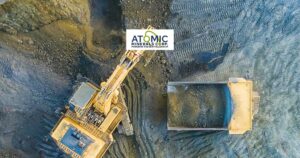In this edition of Mining the Archives, we examine the development of Sudbury as a Canadian nickel hub, which later became an example of how pollution-impacted lands can be reclaimed successfully
The Sudbury Basin was formed by a meteorite impact approximately 1.85 billion years ago, which made mineral-rich magmas rise from deeper in the earth to create the valuable mineral resource deposits in the region.
Robert C. Stanley [CIM Bulletin, July 1927] stated that the first authentic discovery of nickel in the Sudbury district was recorded about 1856. “Sudbury was at that time the terminus of the Canadian Pacific Railway, from which point construction was being pushed westward,” he said. “In the course of this work, a cutting was made which passed through an outcrop of copper ore that was later to be the Murray mine. Prospectors after copper immediately flocked into the surrounding country, and a very large number of claims were staked.”
H.F. Zurbrigg [CIM Bulletin, June 1948] pointed out that many of the conditions of the development of mining geology in the Sudbury district were unique. “The initial ore discovery was accidental. All the major mines were staked for copper,” he said. “Discovery of the nickel content was made in the metallurgical treatment, where it created difficulties, and for that reason and lack of a market, it was for a time regarded as a liability rather than an asset.”
M. Ozberk, W.G. Davenport and N. Gibson [CIM Bulletin, September 1983] stated that by the 1950s, “Canada produced more than ninety-five per cent of the non-communist world’s nickel and achieved dominance in terms of production, technology and pricing policies.”
For the rest of this article: projects/sudbury-becomes-a-major-nickel-producer-en/
This article was published by: Stan
Visit the original article here



